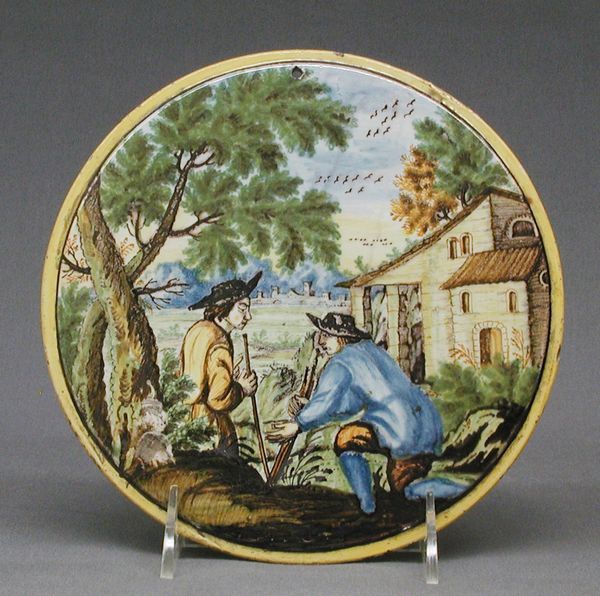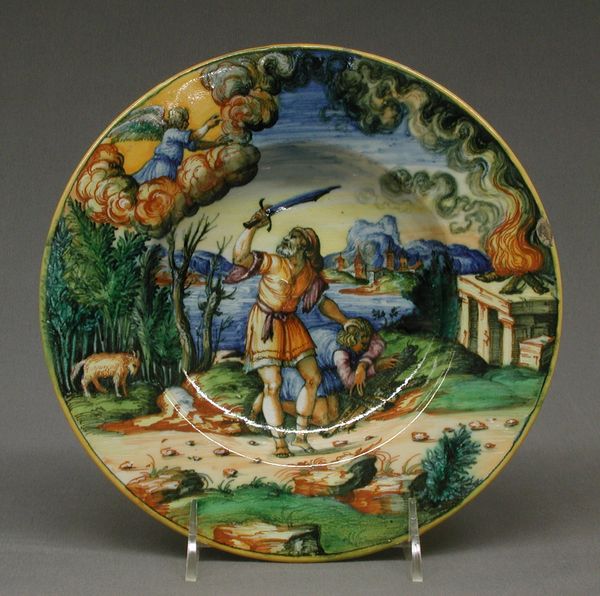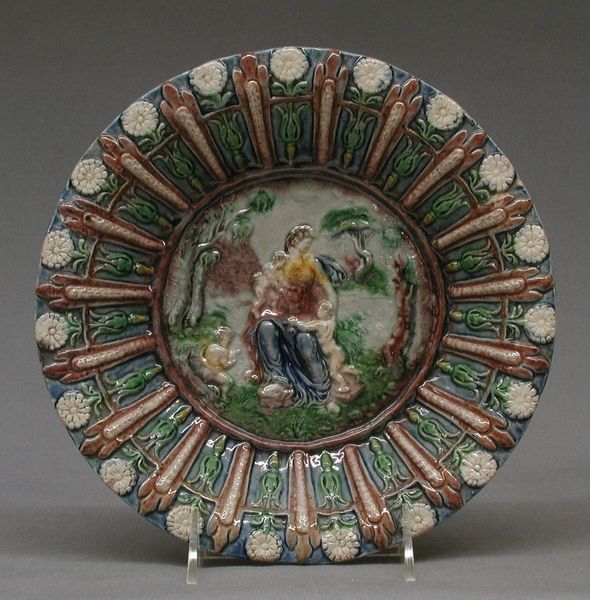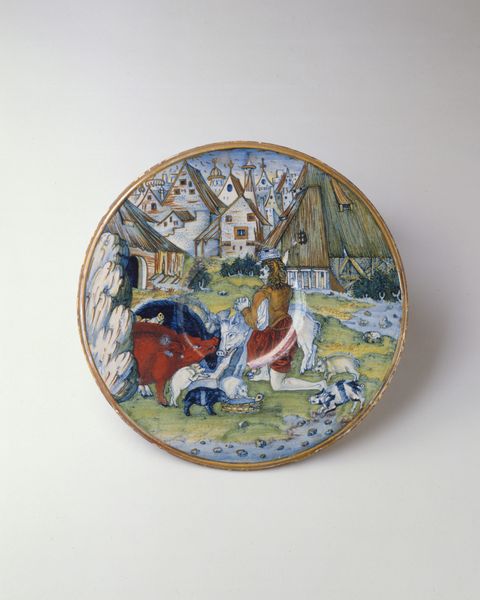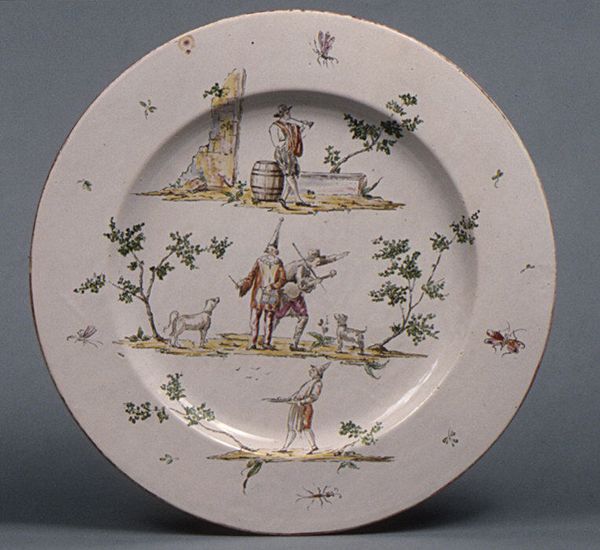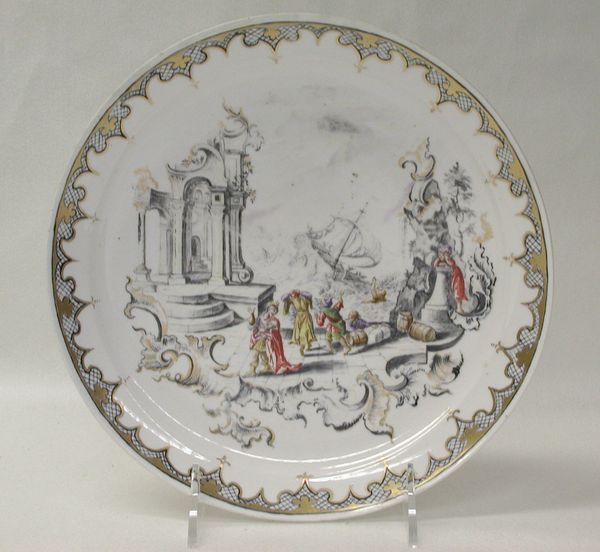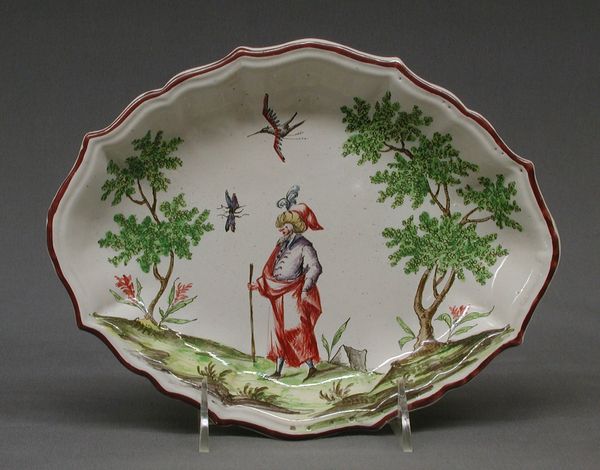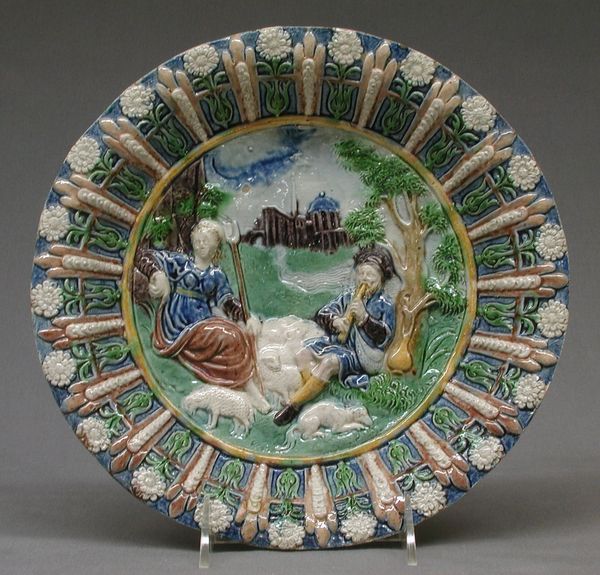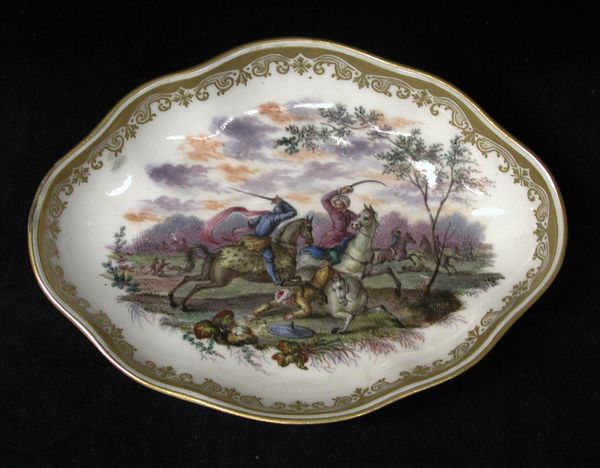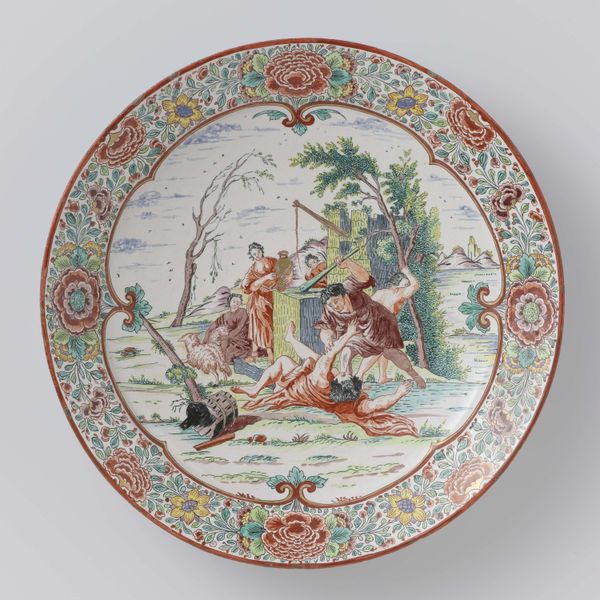
painting, ceramic, watercolor, earthenware, sculpture
#
water colours
#
painting
#
ceramic
#
watercolor
#
earthenware
#
folk-art
#
sculpture
#
ceramic
#
earthenware
#
genre-painting
#
decorative-art
#
decorative art
#
watercolor
Dimensions: Diameter: 13 in. (33 cm)
Copyright: Public Domain
Editor: This is a 19th-century earthenware dish, a ceramic plate, at the Met. It has a scalloped edge and in the center, it looks like a folk scene is painted. The figures and their clothing make it look European to me. What strikes me is the use of heraldry around the border, contrasted with what looks like an everyday moment of a musician playing for a young girl. How do you interpret this work, considering its display function versus the story it tells? Curator: It’s fascinating how this dish operates on several levels simultaneously. As decorative art intended for display, its aesthetic appeal certainly mattered. However, the central image also functioned within a larger system of cultural representation. Notice how the painter borrows from genre painting traditions to depict an idealized vision of rural life. Editor: It does feel romanticized. Was this a common theme in decorative arts of this period? Curator: Yes, the late 19th century witnessed the rise of nationalism and regionalism, spurring interest in folk traditions. The depiction of rural scenes served as a way to construct and celebrate a particular cultural identity. The inclusion of heraldry around the border suggests a connection to a specific place or perhaps an attempt to ennoble the everyday scene. I would wonder, where would such an item be placed and consumed in its own era? How does the combination of a carefully designed and painted scene with what would likely be mass-produced ceramic blanks available at that time speak to tensions about cultural expression? Editor: That's interesting, thinking about the audience and where this dish might have been displayed. I hadn't considered the politics of imagery within something seemingly so simple. Curator: Exactly. And that interplay between form and function, image and object, reveals how even the most "decorative" items can engage with larger socio-political narratives. Editor: I'll definitely look at decorative arts with a fresh perspective now. Thanks for the insight.
Comments
No comments
Be the first to comment and join the conversation on the ultimate creative platform.

